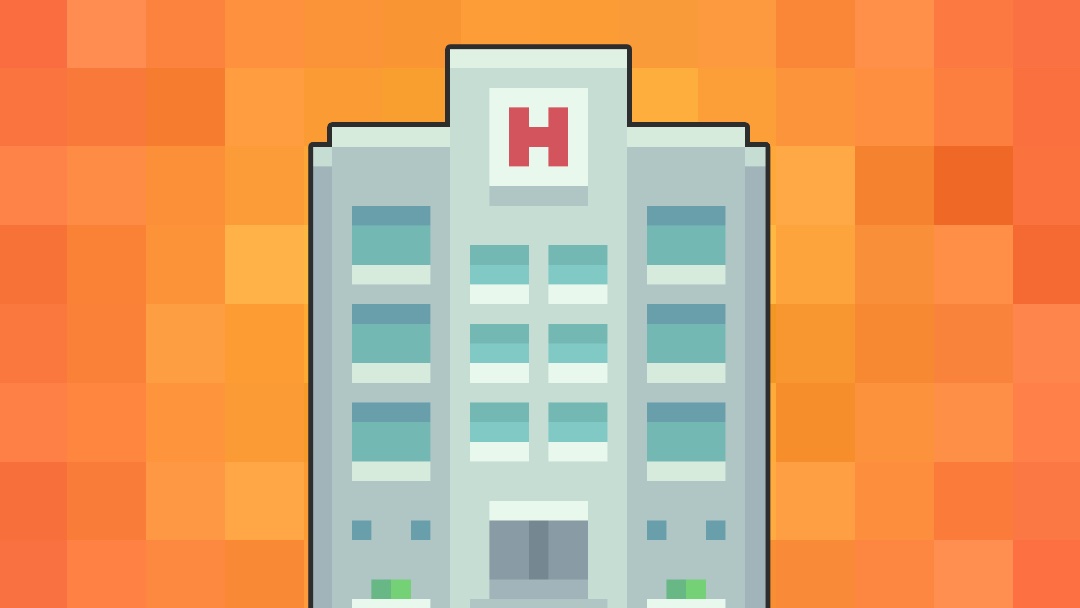- 📖 Geeky Medics OSCE Book
- ⚡ Geeky Medics Bundles
- ✨ 1300+ OSCE Stations
- ✅ OSCE Checklist PDF Booklet
- 🧠 UKMLA AKT Question Bank
- 💊 PSA Question Bank
- 💉 Clinical Skills App
- 🗂️ Flashcard Collections | OSCE, Medicine, Surgery, Anatomy
- 💬 SCA Cases for MRCGP
To be the first to know about our latest videos subscribe to our YouTube channel 🙌
Introduction
A 35-year-old woman is referred to the surgical assessment unit with acute abdominal pain. Work through the case to reach a diagnosis.
UK Medical Licensing Assessment (UKMLA)
This clinical case maps to the following UKMLA presentations:
History
Presenting complaint
“My stomach is killing me.”
History of presenting complaint
Where is the pain?
“At first it was everywhere, but now it is in my lower tummy on the right-hand side”
When did the pain start?
“Around two days ago”
Did it come on suddenly?
“Yes”
How would you describe the pain?
“A sharp pain”
How bad is the pain out of 10?
“8/10 at the moment”
Does the pain go anywhere else?
“No”
Does the pain follow any pattern?
“No, it’s just constant and there all the time”
Does anything help the pain?
“Not moving! I took some paracetamol and that helped a little”
Does anything make the pain worse?
“Moving around”
Have you had any nausea or vomiting?
“Mainly nausea, but I did vomit a couple of times when the pain started”
How is your appetite?
“Yes, I’ve not really eaten since it started”
Any change in weight?
“No”
Have you had a fever?
“Not really, I think the highest I’ve measured has been 37.8C”
Have you had a change in bowel habit?
“No”
Have you noticed any blood in your stools?
“No”
Any change in the amount you are passing urine?
“No”
Is it painful to pass urine?
“No”
Have you had any illnesses recently?
“I had a cold last week”
Have you been feeling more tired than usual?
“No”
Have you noticed any skin changes?
“No”
Have you noticed any abnormal vaginal bleeding?
“No”
Have you noticed any abnormal vaginal discharge?
“No”
When was your last menstrual period?
“It started 2 weeks ago and lasted 4 days”
Clinical examination
Examination findings
- HR 108, RR 20, BP 106/62, Oxygen saturation 96% on air, Temperature 37.9oC
- Generally tender abdomen, maximal tenderness in the right iliac fossa (RIF)
- Voluntary guarding present
- Bowel sounds normal
- No organomegaly
- Vulva appears normal
- No evidence of vaginal prolapse
- Cervix appears normal
- No cervical motion tenderness
- Uterus is of normal size and is anteverted
- No palpable masses
- Rovsing’s sign: palpation of the left iliac fossa (LIF) causes RIF pain
- Psoas sign: extension of the right thigh, in the left lateral position, causes RIF pain
- Obturator sign: internal rotation of the flexed right thigh causes pain
- Hop test: hopping or jumping causes abdominal pain
Investigations
A urine pregnancy testis one of the most important initial investigations in a woman of childbearing age presenting with abdominal pain.
- Full blood count
- Urea and electrolytes
- CRP
- Coagulation profile: in case surgery is needed
- Group and save: in case a blood transfusion is needed
Diagnosis
Vascular: mesenteric ischaemia, upper gastrointestinal bleed, ovarian torsion
Inflammatory & infectious: acute appendicitis, gastroenteritis, urinary tract infection, pelvic inflammatory disease, ruptured ovarian cyst
Neoplastic: intra-abdominal malignancy
Degenerative: diverticulitis
Idiopathic:
Congenital:
Autoimmune: inflammatory bowel disease
Traumatic:
Endocrine: ectopic pregnancy, endometriosis, diabetic ketoacidosis
Investigation results
Some of the results of the patient’s investigations are shown below.
Bedside tests:
- Urine pregnancy test: negative
- Urinalysis: negative for blood, nitrites, and leukocytes
- Blood glucose: 4.7 mmol/L
Blood tests:
- Hb 120 g/L
- WCC 12.7 x 109/L
- Platelets 234 x 109/L
- Na+ 138 mmol/L
- K+ 4.2 mmol/L
- Urea 8.2 mmol/L
- Creatinine 84 μmol/ L
- CRP 48 mg/L
The most likely diagnosis in this patient is acute appendicitis.
They have presented with typical symptoms of migratory abdominal pain (beginning generally and localising to the RIF), nausea and vomiting, and anorexia. The combination of RIF pain, nausea and vomiting, and low-grade fever is known as Murphy’s triad and is commonly seen in appendicitis.
Management
- Intravenous fluids
- Analgesia
- Antiemetics
- Antipyretics
Laparoscopic appendicectomy
This operation removes the inflamed appendix carried out under general anaesthetic. Generally, a laparoscopic approach is preferred. However, an open procedure may be required if the appendix has burst, the patient has a history of abdominal surgery or has from peritonitis.
- Group and save (+/- crossmatch)
- Ensure the patient is nil by mouth
- Consent patient for surgery
- Anaesthetic assessment
- Prescribe any regular medications
- Venous thromboembolism (VTE) risk assessment
- Prescribe VTE prophylaxis
- Inform theatres
Complications
- Perforation: leading to generalised peritonitis
- Abscess formation: generally requiring drainage
- Sepsis
Editor
Dr Jess Speller
References
- Patient UK. Abdominal Pain. January 2023. Available from: [LINK]
- Patient UK. Acute Abdomen. August 2019. Available from: [LINK]
- Tavakkoli A, Szasz P. Acute appendicitis. BMJ Best Practice. 2020. Available from: [LINK]
- NICE CKS. Appendicitis. May 2021. Available from: [LINK]




